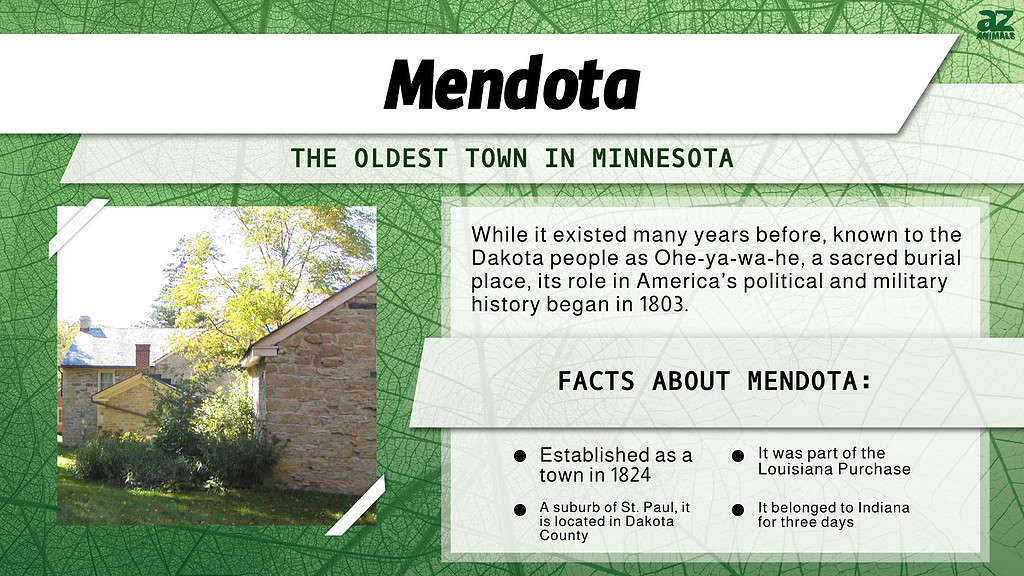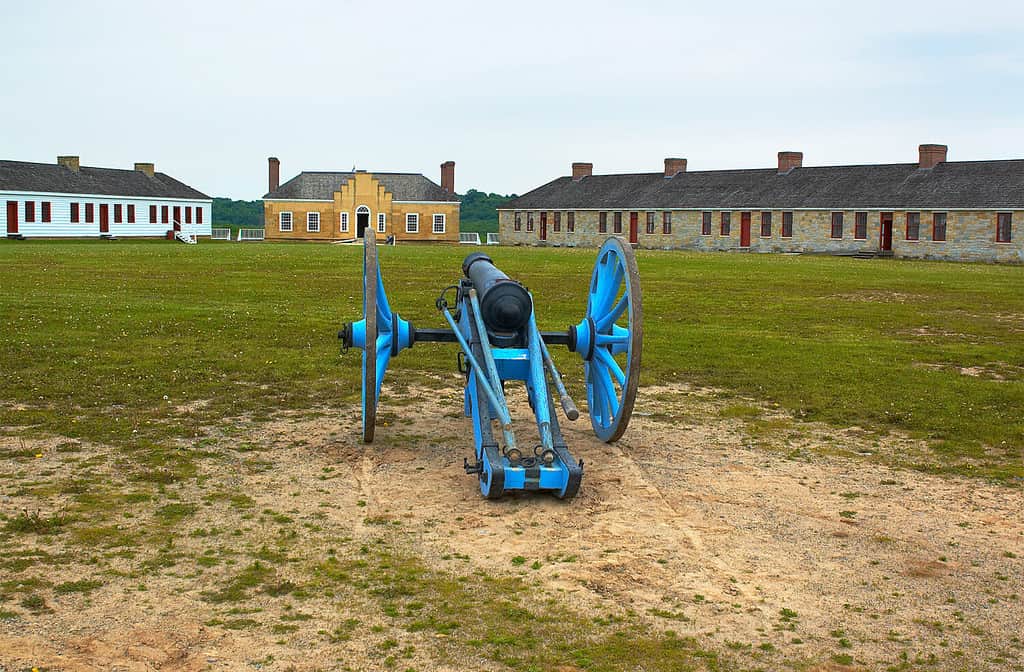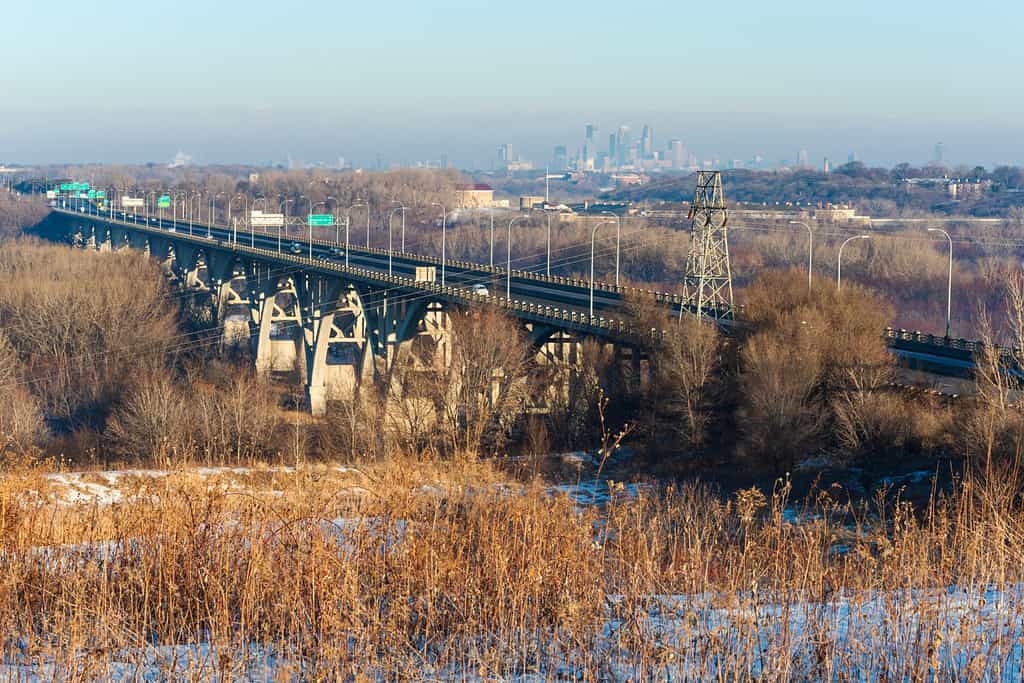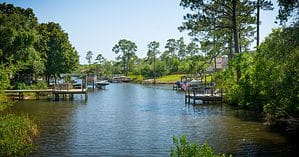In Minnesota, the oldest town in the state has a surprisingly rich history. While the town no longer supports thousands of people, it’s so culturally and historically significant to the nation that it has two different nationally-registered historic districts. Older than the oldest cities in Minnesota, this small town has carried its significance to the present day since the early nineteenth century.
Discover the oldest town in Minnesota, where it’s located on a map, and some of the things to do and wildlife you’ll find there.
What Is the Oldest Town in Minnesota?

Mendota’s location on the Minnesota River made it a strategic place to build a fort.
©Jeff439/iStock via Getty Images
The oldest town in Minnesota is Mendota. While it existed many years before, known to the Dakota people as Ohe-ya-wa-he, a sacred burial place, its role in America’s political and military history began in 1803. By 1824, it had been established as a town.
As part of the Louisiana Purchase, the land that Mendota sits on changed hands often as militaries and presidents consistently shifted who the land belonged to. Mendota had a tumultuous rise to fame within the confines of American history and played host to several important turning points for both Minnesota as a state and the entire nation.

Where Is Mendota Located?
As a suburb of St. Paul, Mendota is located on the eastern side of the state in Dakota County. It is approximately .29 square miles large and surrounded by Mendota Heights on three sides. Its fourth side borders the confluence of the Minnesota and Mississippi Rivers.
Mendota residents remain a short drive away from Minneapolis; just 15 minutes will get you downtown.
About Mendota
Throughout history, Mendota’s tactical location has created a unique opportunity for the small town to serve as a trading and military base.
Various States’ Possession of Mendota
When the land including Mendota came under U.S. possession in 1803 with the Louisiana Purchase, Mendota first belonged to Indiana… for three days. Between March 26 and March 29, 1804, the possession changed hands to the District of Louisiana. A year later, the U.S. renamed the region the “Louisiana Territory,” meaning the name of who owned Mendota changed as well. In the next 50 years, Mendota changed hands a whopping seven times:
- 1813: Part of the Missouri Territory.
- 1821: Part of the orphan Missouri Territory.
- 1834: Part of the Michigan Territory.
- 1836: Part of the Wisconsin Territory.
- 1838: Part of the Iowa Territory.
- 1846: Part of the orphan Iowa Territory.
- 1849: Part of the Minnesota Territory.
- 1858: Officially part of the state of Minnesota.
Fort Snelling

You can still tour Fort Snelling today.
©iamanewbee/Shutterstock.com
In 1805, Lieutenant Zebulon Pike bought Fort Snelling Military Reserve – Mendota Area from the Dakota people who inhabited the land. President Jefferson had sent him west to find and establish an outpost for a fort that the military could use as a reserve area. Constructed in 1819 on the Mendota side of the Minnesota River, Fort Snelling began its tenure as a landmark in the area.
Before the Civil War, soldiers were permitted to bring their enslaved people to the fort. One such person was Dred Scott, who sued for his freedom with his wife during the 1840s. They argued, having lived in a free territory like Minnesota made them free as well — resulting in the landmark Supreme Court case of Dred Scott v. Sandford.
In the 1860s, Fort Snelling served as the center for U.S. forces amid the Dakota War of 1862. It also served as a recruitment station for soldiers needed in the Civil War, the Spanish-American War, World War I, and World War II before being decommissioned.
Today, different government agencies including the Minnesota Historical Society and the Minnesota Department of Natural Resources own portions of the fort.
Mendota Mdewakanton Dakota Tribal Community
The population that lived in Mendota before Lt. Pike bought Fort Snelling was the Mendota Mdewakanton Dakota Tribal Community. While still non-federally recognized, they’ve sought official recognition from the federal government since 1996. The tribal community preserves and continues to live similarly to the Dakota culture.
Wildlife You’ll Find in Mendota

Black-capped chickadees spend their winters in Mendota, Minnesota.
©J.A. Dunbar/Shutterstock.com
Over the 185 acres of land in Mendota, you’ll find a variety of wildlife. As seasons change, different animals migrate to and from the region. According to the Minnesota Valley National Wildlife Refuge, dozens upon dozens of species make Mendota their home, including some threatened animals that take up residence in the managed refuge lands.
Winter
During the snowy winters of Mendota, you’ll be able to see a plethora of birds in forest habitats that weather the cold like northern cardinals, red-bellied and pileated woodpeckers, and black-capped chickadees. Trumpeter swans swim in the wetlands with hooded mergansers and mallard ducks. Finally, mink, river otters, and white-tailed deer deftly leap over the powdery white snow on the ground.
Summer
Mendota and the greater Minnesota Valley play host to dozens of reptile and amphibian species during the summer, including snapping turtles and bull snakes. Like other wet areas, mosquitoes and ticks come out in droves. Unique to Mendota is the population of butterflies, which include monarchs, painted ladies, and tiger swallowtails.
Fall and Spring
Mendota remains a refuge and important migratory stop for many birds like the blue-winged teal, the northern pintail, and the tundra swan. As temperatures are both cool and warm, mammals including muskrats, beavers, and otters frequent the wetlands. Green and leopard frogs will emerge in the spring, too.
Historical Places to Visit in Mendota

You can walk under the Mendota Bridge to get to Fort Snelling.
©Joe Ferrer/Shutterstock.com
History buffs interested in learning more about Mendota’s interesting upbringing can visit or research any of the following historical sites in the town to learn more.
Hypolite DuBois House
First used as a residence in 1854, this well-preserved home became the Sibley Tea House in the mid-1900s. After 1970, the Daughters of the American Revolution preserved this and the other Sibley properties.
Sibley House, Cold Store, and Wash House
Henry Sibley, Minnesota’s first state governor, had a large estate that served several purposes. The home, built of local limestone, served as a fur company headquarters before doubling as military offices and places of note for explorers, artists, and Native Americans. The cold store served as a vault for furs and goods in the 1840s by maintaining a 15-foot ice vault. Lastly, Sibley used the wash house in 1854 as a summer kitchen. Today, it’s where the site caretaker lives.
Jean Baptiste Faribault House
The house’s namesake, Jean Baptiste Faribault, was a trader from England that got into the American fur trade after 1812. The home was built in 1840 after he was selected to run a U.S. post by Colonel Henry Leavenworth.
Limestone Rail Bridge
This bridge connected Mendota to the rest of the world over the Minnesota River. Until 1926, the road beneath it offered a path for horse and automobile traffic to Fort Snelling’s ferry.
Pike Island
The site of Lieutenant Pike’s Treaty with the Mdewakanton Dakota in 1805. Today, it’s a park preserve accessible by a bridge below Fort Snelling.
Minnesota Quarts Company
A red brick building near the stone rail bridge that processed crystalline sand stored in the Faribault House. Today, it’s Jack’s Manufacturing Company but still has a wrought-iron “MQ” on the door.
Minnesota Valley Railroad Depot
This was the second rail line established in Dakota County, though the actual depot was destroyed in the 1970s. Visitors can spot this depot site along the tracks at the limestone bridge in town.
Mendota Jail
Mostly used for “hobos and drunks sleeping it off,” the Mendota jail featured two cells, a stove, a chamber pot, and no running water. In 1915, it took the place of the single jail cell located in Town Hall’s basement.
Mendota City Hall
While no longer standing, the site of the 1910 city hall is located at First Street and D Street. In 1925, when a fire burnt down the village school, the town gave up this building to use for the children.
The Mendota Bridge
When it was built in 1926, it was the world’s longest-poured concrete bridge at 4,119 feet. After construction, officials dedicated the bridge to World War I artillery gunners.
Fort Snelling
Used in the Civil War to train volunteers for the Union Army, this fort remained integral to the Union and many other troops in later wars.
The Mendota/West St. Paul Chapter of the Dakota County Historical Society lists many more sites in Mendota and the surrounding area to explore the region’s nuanced past. Their mission is to preserve the history of Dakota County by creating educational guides and resources.
Mendota: Minnesota’s Oldest Town
Throughout the years, Mendota’s strength has persisted in supporting its residents through conflicts, wars, and economic upheavals. Today, it’s a small town with a close-knit population with many historical sites to explore and learn. It offers a wide-open suburban feel with accessible city living just minutes away.
The photo featured at the top of this post is © Joe Ferrer/Shutterstock.com
Thank you for reading! Have some feedback for us? Contact the AZ Animals editorial team.







